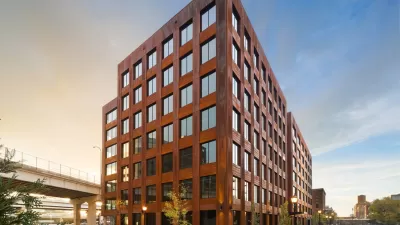Sand has always been an essential part of human life and the rise of cities. but its impact and the world’s dependence on it have been largely overlooked.

Host Roman Mars of the podcast 99% Invisible looks at the topic of sand, at first glance what seems like a boring and inconsequential feature of the world. But, says Vince Beiser, author of The World in a Grain, "Sand is actually the most important solid substance on Earth. It is the literal foundation of modern civilization."
Sand is a fundamental element in concrete, asphalt, and glass, which means most buildings, roads, and windows depend on sand. But we use 50 billion tons of sand every year, and the world supply is starting to run out, says Beiser.
The vast reserves of desert sand are useless since wind-shaped grains are too smooth compared to those formed by water erosion. In addition, the environmental damage that results from taking sand from rivers and oceans is immense. As cities have grown and sand has become a more valuable commodity, violence and corruption have also followed, notes Beiser.
Beiser traces the history of the most influential sand-based product—concrete—from ancient Rome to the invention of reinforced concrete at the turn of last century to the rise of massive cities in developing countries. He says that the sand needed to make concrete is not going to just disappear suddenly, but the efforts needed to extract from the dwindling supply will be more destructive.
While concrete is a valuable building material, Beiser argues that we use too much of it and we need to think about how to consume less in general. Alternative building materials are also part of the solution—bamboo, shredded plastic, recycled tires, and hemp, for example. Mass timber, layered sheets of compressed wood, is another promising option that could potentially provide large quantities of sustainable building materials, reports Mars.
FULL STORY: Built on Sand

Planetizen Federal Action Tracker
A weekly monitor of how Trump’s orders and actions are impacting planners and planning in America.

San Francisco's School District Spent $105M To Build Affordable Housing for Teachers — And That's Just the Beginning
SFUSD joins a growing list of school districts using their land holdings to address housing affordability challenges faced by their own employees.

The Tiny, Adorable $7,000 Car Turning Japan Onto EVs
The single seat Mibot charges from a regular plug as quickly as an iPad, and is about half the price of an average EV.

Seattle's Plan for Adopting Driverless Cars
Equity, safety, accessibility and affordability are front of mind as the city prepares for robotaxis and other autonomous vehicles.

As Trump Phases Out FEMA, Is It Time to Flee the Floodplains?
With less federal funding available for disaster relief efforts, the need to relocate at-risk communities is more urgent than ever.

With Protected Lanes, 460% More People Commute by Bike
For those needing more ammo, more data proving what we already knew is here.
Urban Design for Planners 1: Software Tools
This six-course series explores essential urban design concepts using open source software and equips planners with the tools they need to participate fully in the urban design process.
Planning for Universal Design
Learn the tools for implementing Universal Design in planning regulations.
Smith Gee Studio
City of Charlotte
City of Camden Redevelopment Agency
City of Astoria
Transportation Research & Education Center (TREC) at Portland State University
US High Speed Rail Association
City of Camden Redevelopment Agency
Municipality of Princeton (NJ)





























